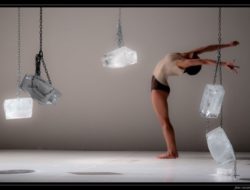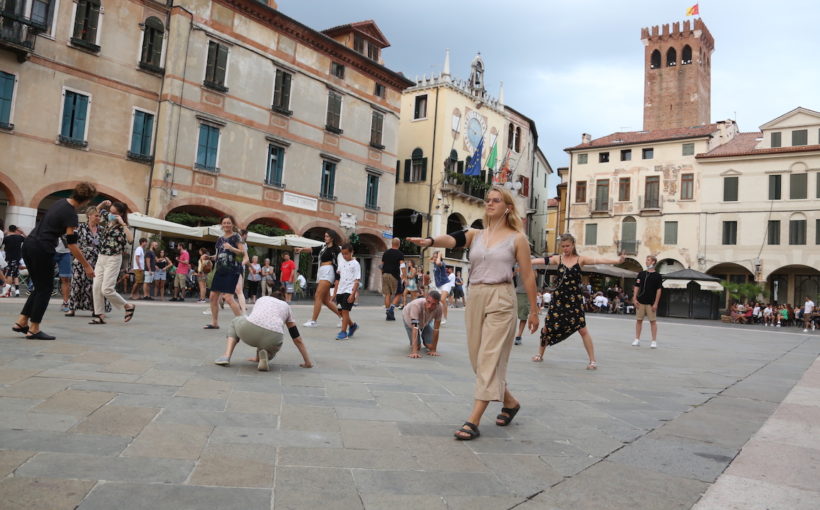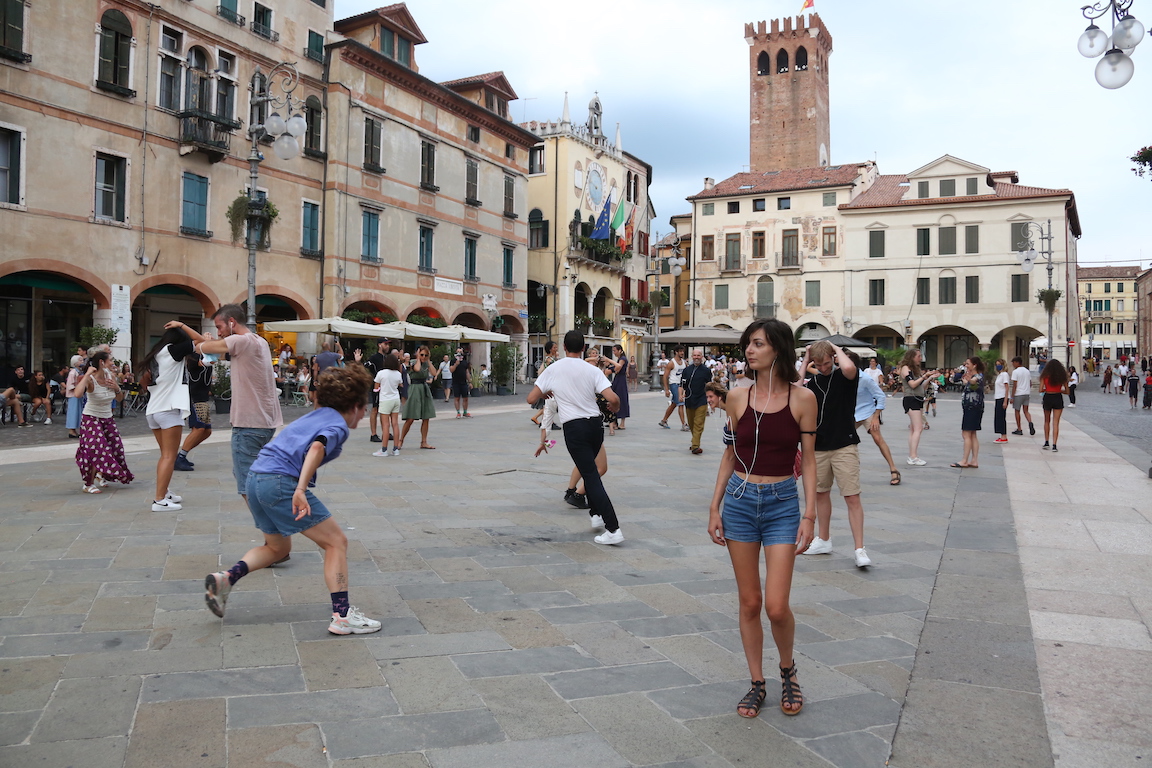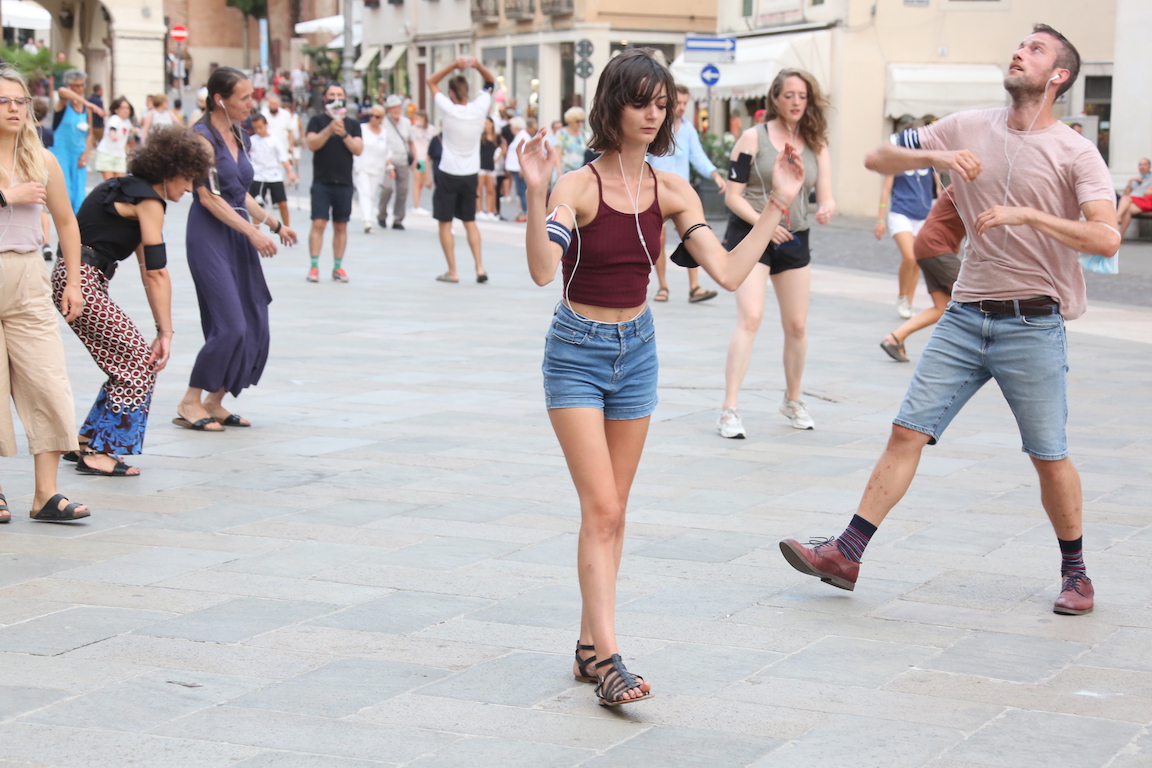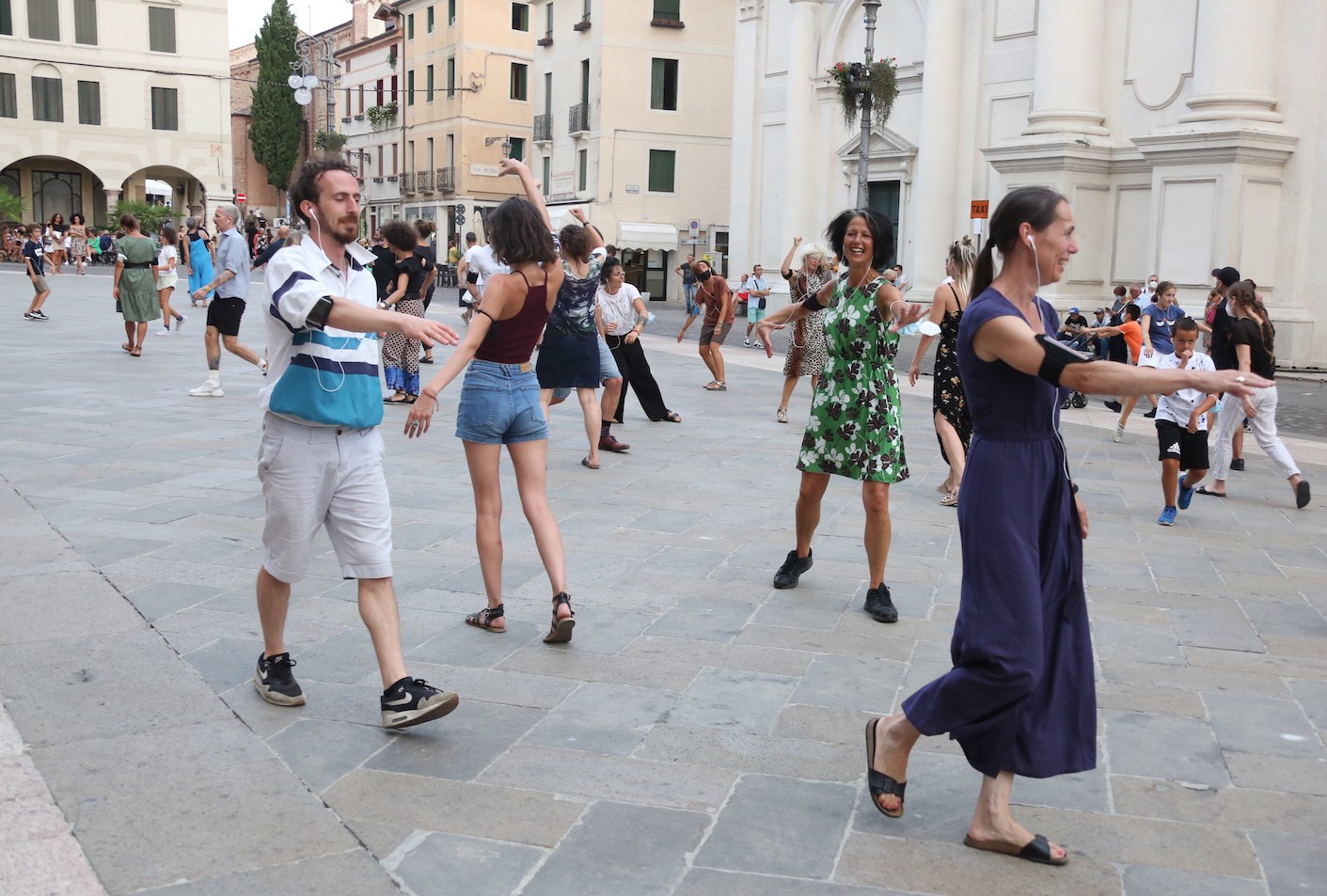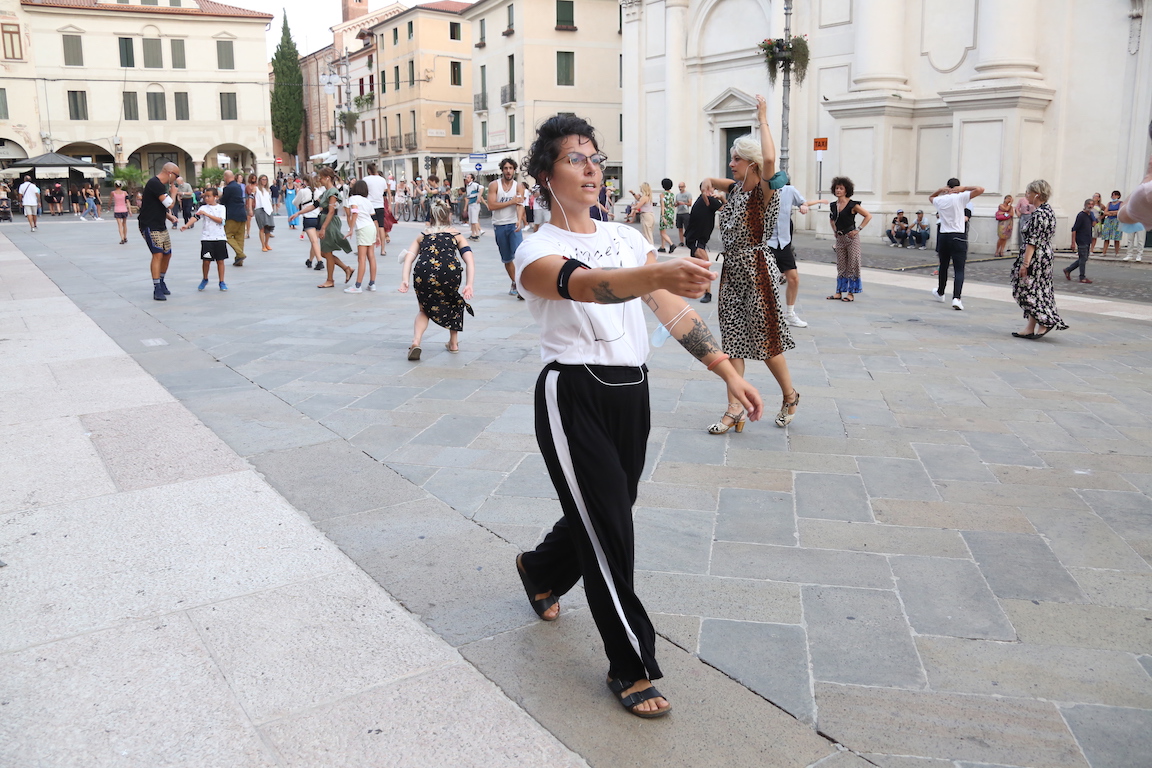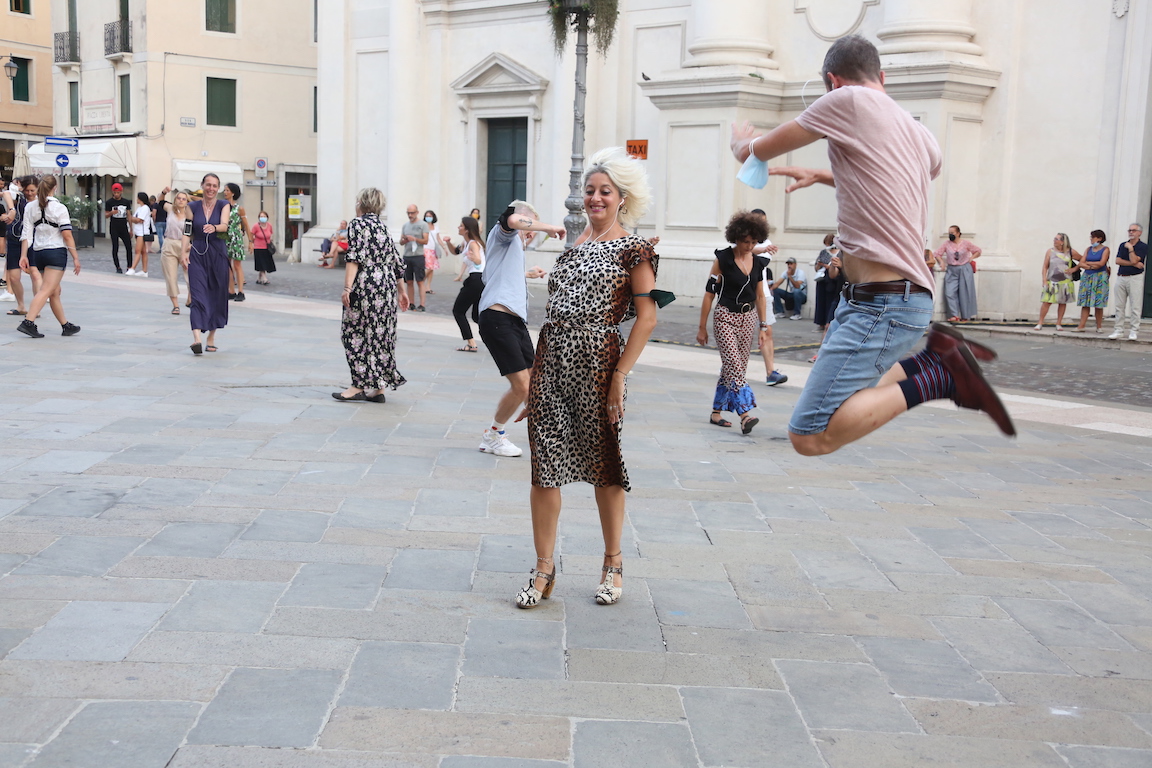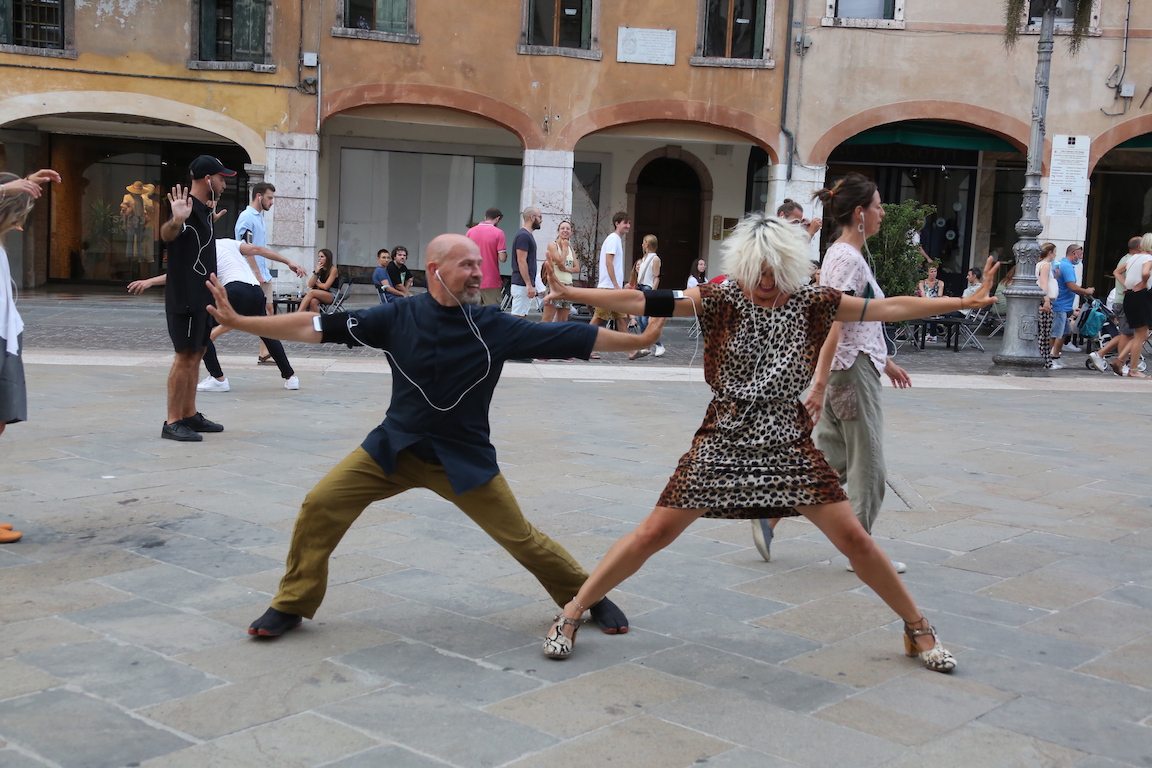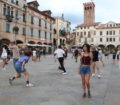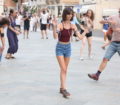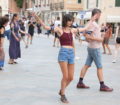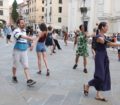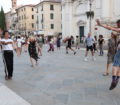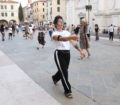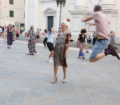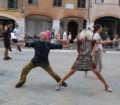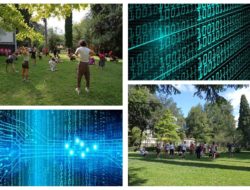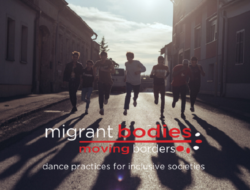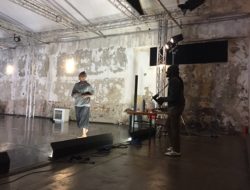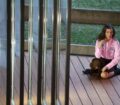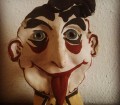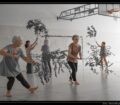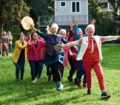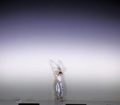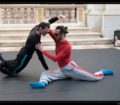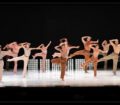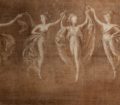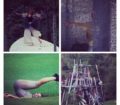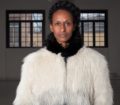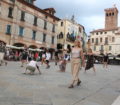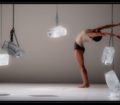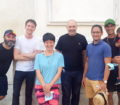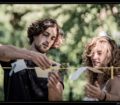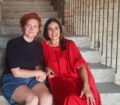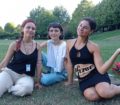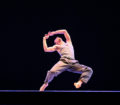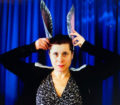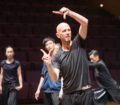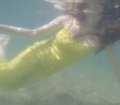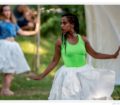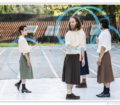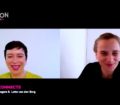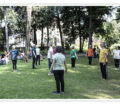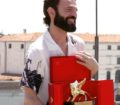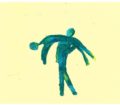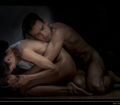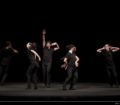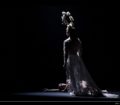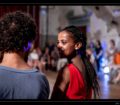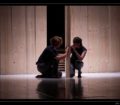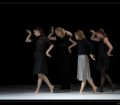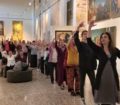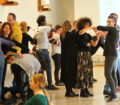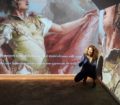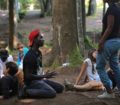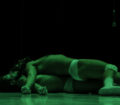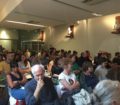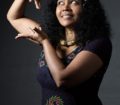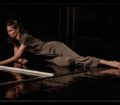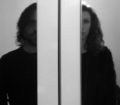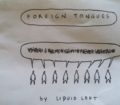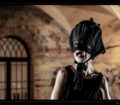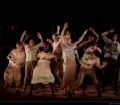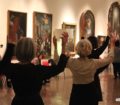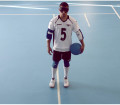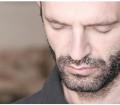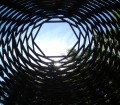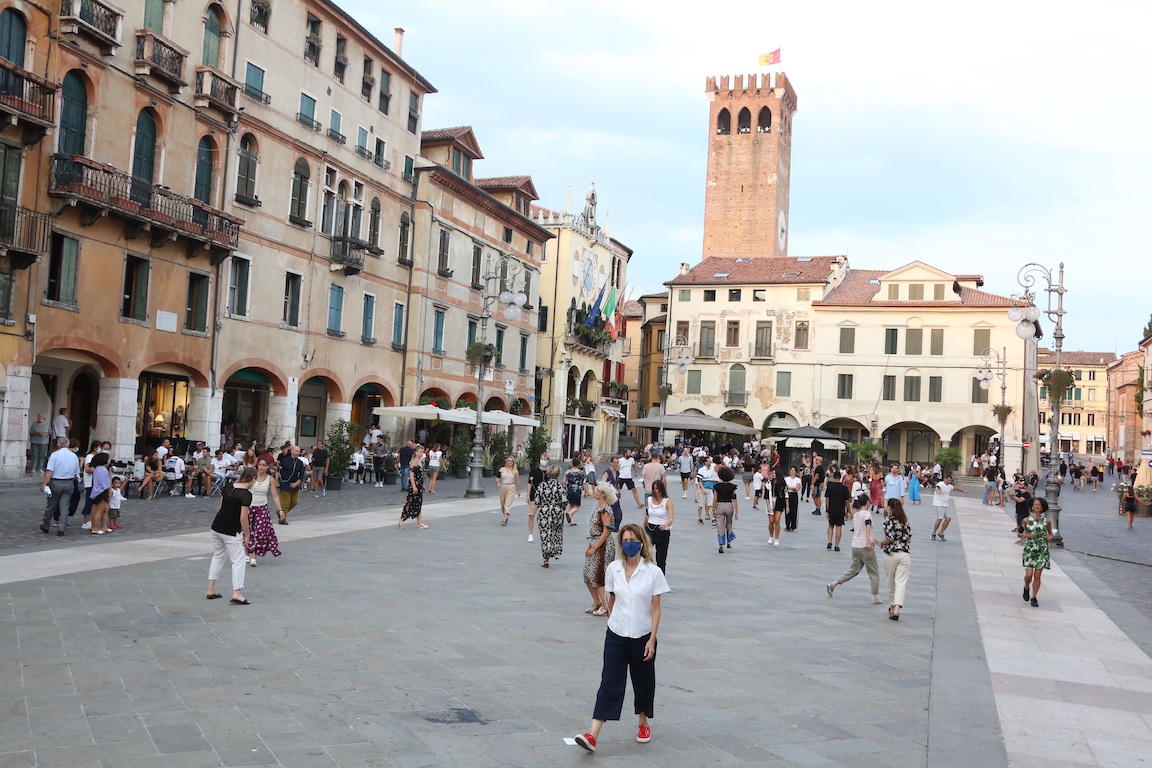
VIBES#4-photo by G. Ceccon
ENGLISH TEXT FOLLOWS BELOW
Eravamo tutti un bel po’ sudati, con le guance arrossate, senza fiato, ma pieni di energia e con un bel sorriso disegnato sul viso. Saremo stati più o meno una cinquantina di persone in Piazza Libertà a Bassano, ad aver partecipato alla prima esperienza di VIBES#4, il quarto protocollo del progetto di ricerca sostenuto da Creative Europe (di cui vi abbiamo parlato qui) che si pone l’obiettivo di far vivere ai partecipanti, in prima persona, l’esperienza della danza, attraverso l’ausilio di un supporto digitale. Quello di cui siamo stati protagonisti è stato una sorta di happening di danza, in parte eterodiretto; solo in parte perché sebbene ognuno di noi ricevesse attraverso lo smartphone e gli auricolari che indossava una partitura coreografica da seguire, ha potuto creare liberamente i propri movimenti, divenendo co-autore non solo della repertorio coreografico, ma grazie all’app che monitorava le nostre risposte – e adattava in tempo reale il suono al nostro movimento – anche co-creatore del paesaggio sonoro che giungeva direttamente nelle nostre orecchie. Una sorta di composizione coreografica e sonora a flusso continuo.
Quello che si è venuto a creare in piazza è stata un nuovo paesaggio di corpi, un tableau vivant di danze improvvisate, curiose, divertenti e sorprendenti anche per chi è rimasto solo a guardare. Sorprendenti perché l’esperienza progettata da Jesus de Vega insieme alla cantante e polistrumentista olandese Michelle Samba, e al team Orbe, è un’esperienza riflessiva e spirituale per niente scontata, che attraverso il gioco e la metafora trasferisce gli ostacoli che incontriamo nelle nostre vite in un mondo virtuale, in un labirinto da cui possiamo uscire solo grazie alla nostra creatività.
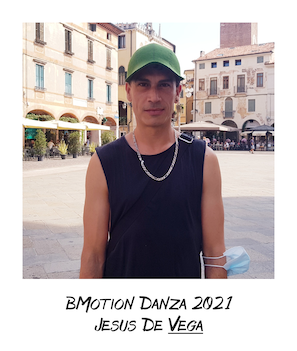
E ora entriamo nel vivo di questo quarto protocollo con l’intervista a Jesus de Vega con il quale abbiamo chiacchierato all’ombra dei palazzi di Piazza Libertà, durante l’ultima giornata di BMotion Danza.
Che cosa ti interessava indagare con questo progetto?
Quello che più mi ha appassionato di questo progetto è stata la relazione tra il suono e il movimento del corpo. La cosa che per me è più importante in questo momento come coreografo o come artista – perché non mi considero veramente un coreografo, mi considero più un creativo che ha un’esperienza nel mondo della danza – è che la coreografia, il movimento arrivi dal pubblico, in modo che il vero performer sia il pubblico. Non perché non ci sia bisogno di danzatori e danzatrici, ma perché quello che desidero è che la gente sperimenti e che abbia la sensazione di essere il vero performer. Desidero che sperimenti la sensazione di libertà, la sensazione di essere immerso in una realtà sensoriale, che è quello che per me come danzatore e come performer è stata una “droga”; è qualcosa che ti fa sentire “superman”, e che permette alla gente di vincere la paura di danzare, perché la danza non deve far paura.
Hai tirato in causa il tema della paura, e devo dire che io stessa prendendo parte alla performance in piazza, mi sono sentita di primo acchito intimorita e imbarazzata sotto lo sguardo di un possibile pubblico – nel nostro caso la gente di passaggio e quella seduta nei vari bar all’aperto – ho avvertito il timore di un giudizio. Poi però la dimensione del gioco, e l’essere parte di una coralità mi ha permesso di dimenticarmi tutto questo, e di immergermi completamente nell’esperienza.
Ho tenuto conto di queste possibilità. E ho pensato che se l’esperienza passava attraverso il gioco, le persone non avrebbero pensato che stavano danzando, ma avrebbero pensato che stavano giocando. È una “strategia” diversa, il gioco evita che il celebrale sia più forte della sensazione, del sensoriale. E spero che le persone si sentano progressivamente sempre meno nella realtà che li circonda, e sempre più nella realtà del gioco del labirinto, e degli ostacoli che contiene. Una delle cose più importanti per il progetto VIBES è stato quello di voler coinvolgere il pubblico in un nuovo modo di guardare e vivere la danza. E io ho pensato che il gioco fosse la via migliore, perché il gioco non è danza ma fa parte della danza, perché danzare è sperimentare, ed è una sperimentazione fisica e sensoriale.
Chi o che cos’è Mujõ?
Mujõ è il carattere del gioco, si nasconde all’interno del labirinto, è ciò che devi trovare, è la voce che ti guida durante tutta l’esperienza. Il nome mujõ è una parola giapponese che significa impermanenza, un po’ come la vita, è qualcosa che passa; è l’importanza di comprendere che la vita è un flusso, inizia e finisce, e noi dobbiamo accettarlo.
I partecipanti, una volta indossati gli auricolari e iniziato il gioco, si trovano ad attraversare un labirinto virtuale, dove incontrano degli ostacoli. Come mai hai scelto questo tipo di spazio e che cosa rappresenta il labirinto?
Il labirinto è la vita. Il labirinto è utilizzato come metafora per trovare la spiritualità. Io credo che in questo momento sia molto importante ri-trovare la nostra spiritualità, la nostra libertà di essere più umani. Nel labirinto ci sono degli ostacoli che si ispirano a situazioni reali, a quello che accade nella vita. Per esempio il pendolo elettrico rappresenta quel momento della vita in cui ti devi fermare e aspettare, perché hai bisogno di alimentare il tuo corpo di nuova energia, e solo dopo esserti ricaricato puoi andare avanti, e puoi passare “l’ostacolo”. Un altro ostacolo è lo specchio, ad un certo punto tutto quello che ti circonda nel labirinto diventa specchio, e per andare avanti devi trovare il modo per romperlo, e rompere l’immagine che riflette. C’è stato un momento nella mia vita in cui ho visto il mio riflesso nello specchio e ho pensato che quello che vedevo non ero veramente io, ho sentito il bisogno di rompere quel riflesso che non mi rappresentava per continuare ad andare avanti con il vero me stesso.
Ad un certo punto, nel labirinto, ci si imbatte anche in un animale: La Bestia.
La bestia rappresenta la negatività: la cosa negativa, il pensiero negativo, le nostre paure, le nostre insicurezze. In questo caso per avanzare lungo il labirinto devi essere tranquillo e stare molto attento, muoverti piano, senza far rumore per non svegliare la bestia: hai bisogno di trovare dentro di te la pace per non risvegliare la negatività. Insomma ogni ostacolo ha a che fare con le difficoltà della vita. E ogni ostacolo si ripete più e più volte perché penso che la vita sia sempre la stessa cosa, quello che cambia è come ti relazioni con quello che ti viene incontro lungo il tragitto che stai compiendo. Spero che le persone che partecipano a questo gioco si interroghino su questo, si chiedano come mai si sono trovati sempre di fronte allo stesso ostacolo; e spero che si possano sentire creativi quando di fronte allo stesso ostacolo troveranno un nuovo modo e un nuovo movimento per proseguire.
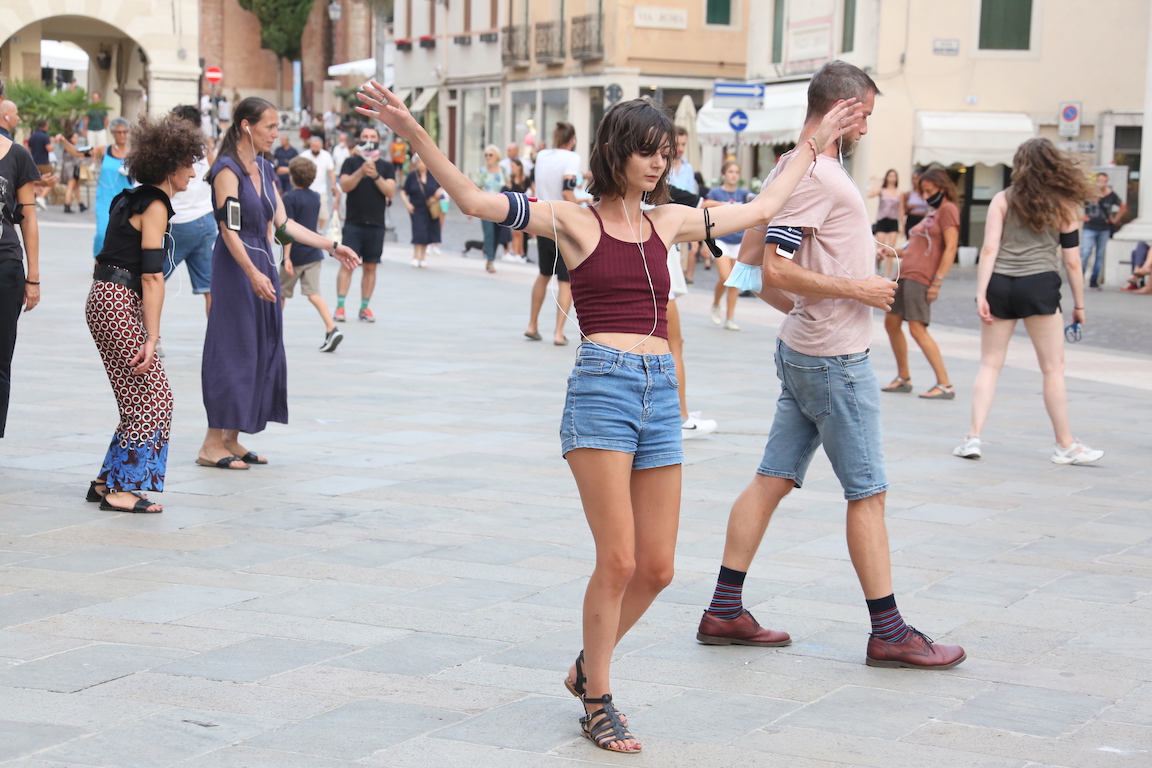
VIBES#4-photo by G. Ceccon
In VIBES#4 si passa attraverso l’esperienza virtuale per arrivare a un’esperienza spirituale, e la danza è il medium, il punto di connessione e di spinta verso queste due “distanze”. Ed è anche la tramite tra l’esperienza del singolo e l’esperienza del gruppo, della “compagnia” che si viene a creare. VIBES ha tutti i connotati per essere anche un esperimento sociologico.
Esatto, questo prima di tutto è un esperimento. Quando ho proposto questa idea a Xavier Boiasser, fondatore e autore di Orbe, ne è rimasto entusiasta, ma c’è anche chi mi aveva suggerito di proporre una coreografia più tradizionale, più danzata. Io ho pensato che la cosa più importante in questo momento fosse sperimentare la nostra fisicità e la nostra creatività, perché penso che il mondo ha bisogno di più creatività. Altrimenti presto diventeremo tutti degli essere lobotomizzati, non penseremo e non sentiremo più nulla. Con il sopravvento della digitalizzazione mi sembra che stiamo perdendo la nostra creatività, perché per tutto il tempo interagiamo con idee che ci arrivano da altri, con la creatività di qualcun altro, senza interrogarci su di noi. Io voglio che le persone abbiano un momento dove ogni cosa dipende solo dalla loro creatività. Io suggerisco un percorso, ma come farlo dipende esclusivamente da loro. Nel gioco del labirinto tutto avviene velocemente, ci sono continuamente nuove direzioni e nuove azioni da fare, ma nel momento in cui ti trovi a ripetere un’azione spero che le persone si dicano “ok, prima l’ho fatto in quel modo ora provo a farlo così”. Spero che sperimentino nuove possibilità di relazione con lo spazio, che non è solo lo spazio esterno ma è anche spazio interno, quello che ognuno ha dentro di sé. Voglio creare un mondo dove ogni persona sia portata a farsi delle domande, si possa mettere alla prova, in discussione, e sia concentrata a trovare la libertà in se stessa e nella relazione con gli altri, in quello in cui siamo uguali e in quello in cui siamo differenti.
Avendo partecipato due volte all’esperienza, una volta al test e la seconda alla performance, mi sono resa conto che l’esperienza era cambiata. La seconda volta sono andata molto più veloce e sono arrivata fino alla fine del labirinto, è cambiata anche la sensazione che ho provato: durante il test mi ero sentita molto più in difficoltà, frustrata, mentre alla fine della seconda volta, nonostante il fiatone e la stanchezza, mi sono sentita piena di energia, contenta, entusiasta; oserei dire felice.
Il labirinto è differente per ognuno di noi, perché per ognuno di noi rappresenta e contiene qualcosa di diverso. Quello che ho notato è che quando qualcuno lo fa più di una volta, ogni volta è differente dalle precedente, l’esperienza cambia perché la persona è ogni volta diversa. La cosa più importante del lasciarsi coinvolgere è che aumenta la voglia di giocare. Più è forte il coinvolgimento e più aumenta la voglia di giocare. Quando, dopo il test, ho detto a Xavier che avevo voglia di giocare ancora, lui mi ha risposto che significava che il gioco aveva funzionato! Ci piacerebbe che alle persone venisse la voglia di ripetere il gioco più volte. Ogni movimento fisico entra in relazione con un chakra, ogni chakra ha una frequenza, una vibrazione, e ad ogni ostacolo produce una vibrazione differente nel corpo. Tutti i movimenti, le azioni che si fanno durante il gioco vanno a lavorare sui chakra, creando un’apertura. Alla fine del gioco ci si sentirà affaticati ma “aperti”, carichi di nuova energia.
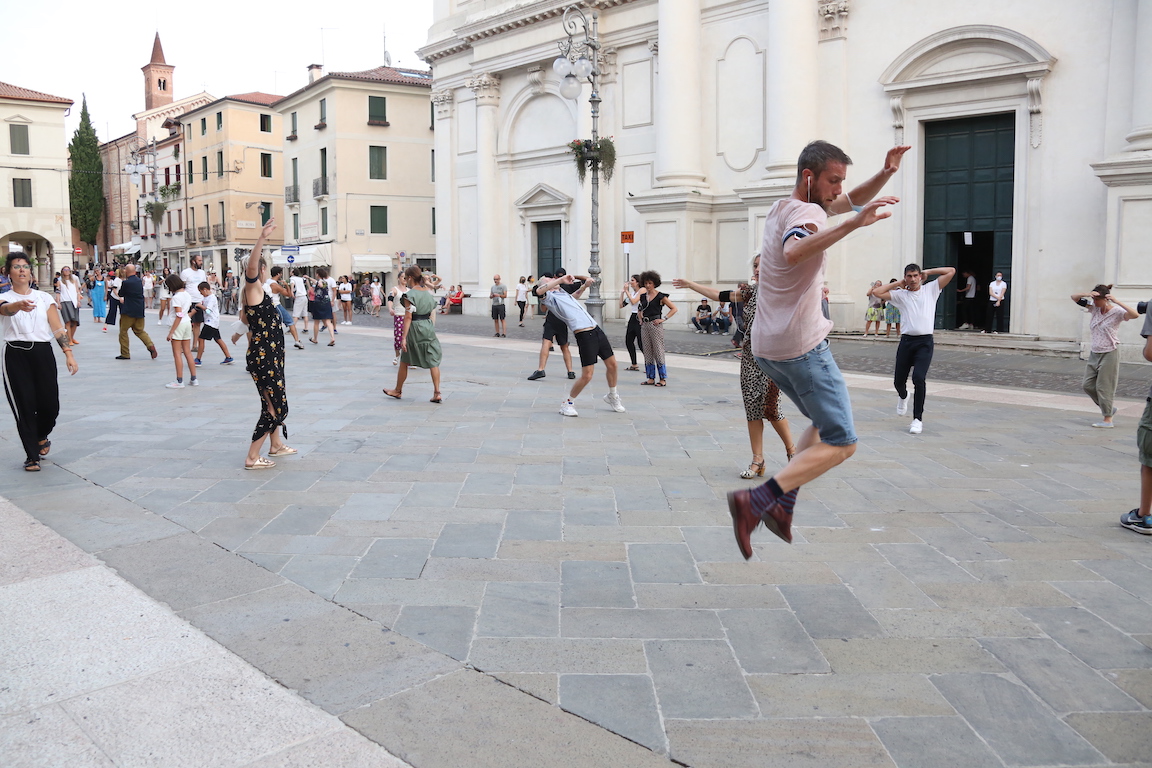
VIBES#4-photo by G. Ceccon
Non abbiamo ancora toccato l’aspetto musicale del progetto. Ho l’impressione che sia un tema importante per te. Una delle prime cose che Mujõ – il carattere del gioco – ci sussurra nelle orecchie è che “il movimento è suono e il suono è movimento”. Lo dicevi anche durante la classe di danza che hai condotto durante BMotion. La partitura coreografica è costruita a sua volta su una partitura sonora, realizzata insieme alla cantante e polistrumentista Michelle Samba. Come avete lavorato insieme?
È vero, l’aspetto musicale è molto importante per me. Io non posso coreografare se non sento la musica. La prima cosa che ci siamo chiesti io e Michelle è stata: dove si trova questo labirinto e come suona? Abbiamo deciso di creare qualcosa di digitale combinandolo con qualcosa di organico, mettendo insieme antico e contemporaneo. Abbiamo costruito una partitura di suoni naturali, che ognuno ha nel suo background – come il suono dell’acqua, il suono del camminare sull’erba – e suoni sintetici. Ci sono anche i suoni di insetti reali, mentre l’entrata nel labirinto è accompagnata dal suono dei tamburi. Per ogni ostacolo abbiamo scelto il suono sulla base dell’effetto che produce la stessa frequenza del suono, per esempio il suono del pendolo elettrico riproduce la stessa elettricità di qualcosa che tu non vuoi toccare, da cui vuoi stare distante, e ti trasmette la sensazione di dovere mantenere la distanza. Il suono della bestia è un respiro elettronico, è gutturale, pauroso. Abbiamo scelto ogni suono con l’intenzione di provocare una sensazione. Naturalmente non potevamo inserire qualsiasi cosa, ci sono dei limiti tecnici perché l’app deve gestire tantissime informazioni, abbiamo scelto quei suoni che potevano indurre una sorta di trance. La persona è costantemente immersa nel suono, in un beat, che lei stessa crea con il proprio movimento, quando ci si ferma non si produce nessun suono.
Si potrebbe definire VIBES un viaggio emozionale e sensoriale.
Quello che ho cercato di fare è stato coreografare le emozioni, e non il movimento, spero che la gente capisca questo. Al di là di tutto comunque credo che la cosa più importante sia non giudicare ma sperimentare. Lasciarsi andare e vivere l’esperienza, che piaccia o meno l’importante è vivere l’esperienza. All’inizio del gioco quello che dico sempre è: divertitevi, diventati bambini!
Rita Borga
Foto di G. Ceccon
---------------------------------------------------------------------------------------------------------------------
ENGLISH TEXT
VIBES#4 by Jesus de Vega: the challenge of the labyrinth (of life) is won through dance steps
We were all rather sweaty, flushed cheeks, out of breath, yet full of energy and beaming grins. There were more or less fifty of us in Piazza Libertà, Bassano town centre, participating in the first experience of VIBES#4, the fourth protocol of the research project funded by Creative Europe (read here our article about the project) who’s goal is of allowing participants to live the experience of dance in the first person, through digital aids. We were the protagonists of a type of dance-happening, partly hetero-directed; only in part because, despite each individually following the smartphone-earphone guidance via a choreographic score, one was able to freely create one’s own movements, becoming co-author not only of a choreographic repertoire, but, owing to the app’s deft monitoring of our responses (and thus adapting the sound to our movements in real time) one could also become co-creator of the soundscape that fed directly back into our ears. A sort of continuous-flow choreographic and audio composition.
What was created in the piazza was a new landscape of bodies, a tableau vivant of improvised, curious, amusing and surprising dances, an experience even for those who were left outside to watch. Often surprising because this experience, designed by Jesus de Vega together with the Dutch singer and multi-instrumentalist Michelle Samba as well as the Orbe team, is a reflective and spiritual affair that is not at all obvious, which, through play and metaphor, transfers the hurdles we encounter in our lives into a virtual world, into a labyrinthine from in which we can only escape by way of our own creativity.
 And now let’s see if we can orient ourselves around to the heart of this fourth protocol through the following interview with Jesus de Vega with whom we chatted in the shadow of Piazza Libertà’s facades, on the last day of BMotion Danza.
And now let’s see if we can orient ourselves around to the heart of this fourth protocol through the following interview with Jesus de Vega with whom we chatted in the shadow of Piazza Libertà’s facades, on the last day of BMotion Danza.
What were you interested in investigating through this project?
What fascinated me most about this assignment was the relationship between sound and bodily motion. The pivotal idea to me right now as a choreographer or, rather, artist – because I don’t really regard myself a choreographer, I consider myself more as a creative who has experience in the world of dance – is that the choreography, the movement, comes from the audience, so that the true performer is the audience. Not because there’s no need for male or female dancers, but because what I seek is for people to experiment and have the feeling of being the real performer. I want you to experience that feeling of freedom, the feeling of being immersed in a sensorial reality, which as a dancer and performer effectively amounted to my “drug”; it’s something that makes you feel like a “superman”, and that allows people to overcome their fear of dancing, because dance doesn’t have to be scary.
You brought up the theme of fear, and I must say that taking part in the performance in the piazza myself, I initially felt intimidated and embarrassed under the potential gaze of onlookers – in our case the people passing by or sitting at the various outdoor bars – I sensed the anxiety of judgment. But then there was that aspect of a game, and being part of an ensemble allowed me to push these worries to the back of my mind, and to immerse myself completely in the experience.
I had taken these factors into account. I reasoned that if the experience was routed through play, people wouldn’t think they were dancing, but they would think they were playing. It’s a different “strategy”, play prevents the cerebral from dominating sensation, the sensorial. And I hope that participants feel progressively less and less in the reality that surrounds them, and more and more in the reality of a maze-like game, and deal with the obstacles presented within. One of the most important things for the VIBES project was to stimulate a new way of watching and experiencing dance by public involvement. And I thought that the game idea was the best way, because game is not dance but it is part of dance, because to dance is to experience, and it is a physical and sensorial experimentation.
Who or what is Mujõ?
Mujõ is the game’s central character, he hides inside the labyrinth, he is the one you have to find, he is the voice that guides you throughout the experience. The name Mujõ is a Japanese word that means impermanence, a bit like life, it is something that passes; it is the importance of grasping that life is a flow, it begins and ends, and we must accept that.
Once the participants put on their earphones and began the game, they find themselves navigating a virtual labyrinth, where they encounter obstacles. Why did you choose this type of space and what does the labyrinth represent?
The labyrinth is life. The labyrinth is used as a metaphor for finding spirituality. I believe that in this moment it is very important to rediscover our spirituality, our freedom to be more human. In the labyrinth there are obstructions that are inspired by real situations, by what happens in life. For example, the electric pendulum represents that moment of life in which you have to stop and wait, because you need to feed your body with replenished energy, and only after having recharged are you able to move on, and you can pass the “restriction”.
Another hindrance is the mirror, at some point everything that surrounds you in the labyrinth becomes a reflector, and to move forward you have to find a way to smash through it, to shatter the image it reflects. There was once a moment in my life when I saw my reflection in the mirror and I thought that I wasn’t actually viewing the real me, I was overcome by the the urge to splinter that reflection which didn’t represent me in order to continue moving forward with who I actually was.
At a certain point, in the labyrinth, you also come across an animal: The Beast.
The beast represents negativity: the negative entity, negative thought, our fears, our insecurities. During this episode, to advance along the labyrinth you have to be calm and exceedingly careful, move gradually, without making a noise so as not to wake the beast: you must find peace within yourself so as not to awaken negativity. In short, every obstacle has to do with the difficulties in life. And every obstacle repeats itself over and over again because I think that life is an ongoing recurrence, what changes is how you relate to what comes your way, along the path you have chosen. I hope that the game’s participants muse upon this, wonder why they have always found themselves faced with the same impediment; and when confronted with the same issue, I hope they are able to feel creative and find new ways and new movements with which to move forward.

VIBES#4-photo by G. Ceccon
In VIBES#4 we go through the virtual experience and arrive at a spiritual realm, and dance is the medium, the point of connection and thrust towards these two “distances”. It is also the link between the individual’s experience and that of the group, of the “company” that is created. VIBES has all the connotations to be a sociological experiment too.
That’s right, this is primarily an experiment. When I proposed this idea to Xavier Boiasser, Orbe’s founder and creator, he was enthusiastic, but there were others who suggested I put forward a more traditional, danced choreography. I thought that the most important thing right now was to experience our physicality and our artistry, because I believe the world is crying out for more creativity. Otherwise we’ll soon all become lobotomised beings, we won’t be able to think or feel anything anymore. With digitisation taking over, it seems to me that we are losing our originality, because we’re always interacting with ideas that come to us from others, with someone else’s ingenuity, without questioning ourselves. I want people to undergo a moment where everything depends just on their own creativity. I suggest a path, but how they actually do it is entirely up to them. In the maze game everything happens swiftly, there are new directions and new actions to carry out constantly, but the moment one find oneself repeating an action I anticipate they will pause to ponder “Ok, before I did it that way, now I’ll try out this”. I hope that they will experience novel possibilities of relating to space, not only the external but also the internal space, that which everyone has within them. I want to create a world where every person is encouraged to ask questions, to test out ideas, and be focused on finding freedom in themselves and in their relationships with others, in those aspects in which we are equal and in those in which we are are different.
Having participated in the experience twice, first in the test rehearsal and then in the performance itself, I became aware that the experiences were different. The second time I went much faster and managed to reach the end of the maze. My feelings changed too: during the test I felt myself in difficulty, frustrated, while by the end of the second time, despite my fatigue and breathlessness, I felt full of energy, pleased, enthusiastic; dare I say happy.
The labyrinth is different for every individual, because for each of us it represents and contains something divergent. What I’ve noticed is, if someone has done it more than once, each time is quite dissimilar from the prior occasion, the experience changes because the person is no longer the same. The most consequential thing about getting involved is that it increases the desire to play. The more the involvement, the more the desire to play ramps up. When, after the test, I told Xavier that I wanted to play it again, he replied that it meant the game had worked! We want people wishing to repeat the game over and over. Each physical movement enters into a relationship with a chakra, each chakra has a frequency, a vibration, and at each obstacle it produces is a different vibration in the body. All the movements, the actions that are performed during the game go to work on the chakras, creating an aperture. At the end of the game you will feel fatigued yet “open”, charged with replenished energy.
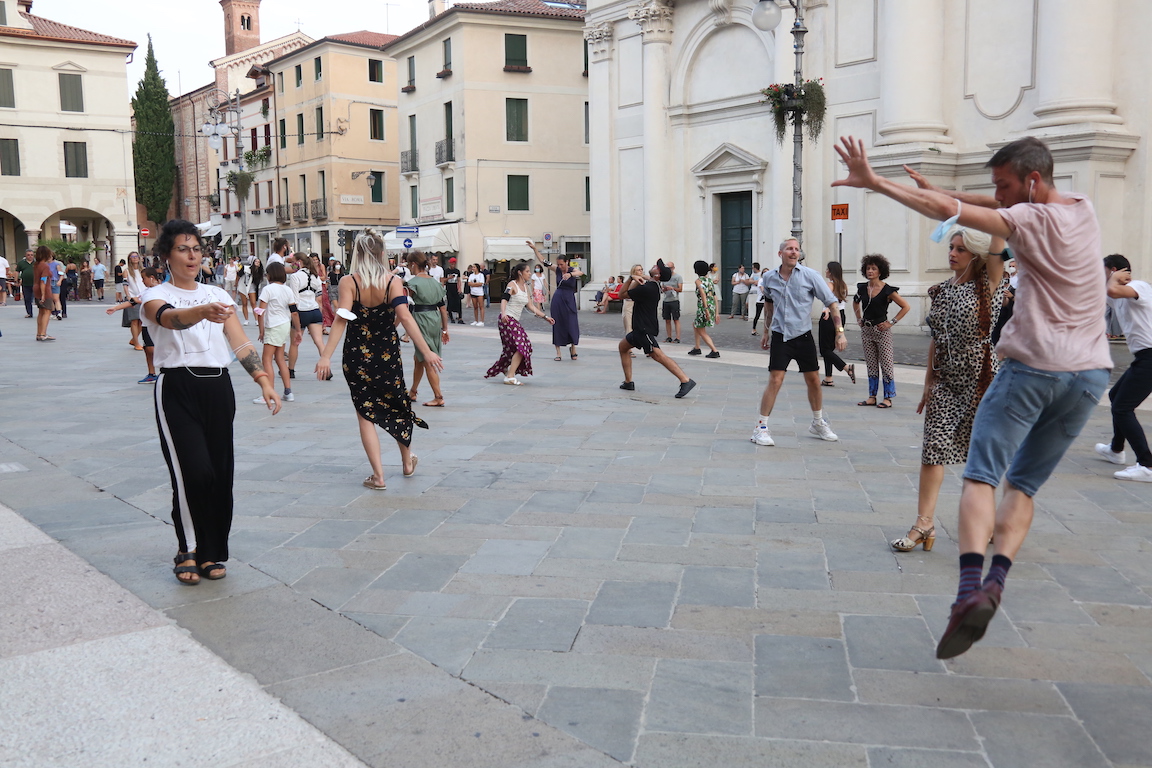
VIBES#4-photo by G. Ceccon
We haven’t touched on the musical aspect of the project yet. I have the impression that it’s an important topic for you. One of the first things that Mujõ – the game’s character – whispers in our ears is that “movement is sound and sound is movement”. You also said this during the dance class you held during BMotion. The choreographic score is in turn built on a sound score, created together with the singer and multi-instrumentalist Michelle Samba. How well did you work together?
True, the musical aspect is very important to me. I can’t choreograph if I can’t hear the music. The first thing Michelle and I asked ourselves was: where is this maze and how does it sound? We decided to create something digital by combining it with something organic, combining ancient and contemporary. We have built a score of natural sounds, ones which everyone has in their background – such as the sound of water, of walking on grass – as well as synthetic sounds. There’s also the sounds of actual insects, while the entry into the maze is accompanied by the sound of drums. For each obstacle we chose the sound on the basis of an effect that produces the same frequency, for example the swish of the electric pendulum reproduces the same electricity as something you do not want to touch, from which you want to stay well away, giving you the feeling of wanting to keep your distance. The rasp of the beast is an electronic breath, it is guttural, frightening. We chose each sound with the intention of causing a distinct sensation. Of course we couldn’t insert absolutely anything, there are technical limits because the app has to process a great deal of data, we chose those sounds that could induce a sort of trance-like state. The user is constantly immersed in the sonics, in a beat, which they themselves generate with their own movement. When one stops, so does the sound.
VIBES could be defined as an emotional and sensorial journey.
What I tried to do was choreograph the emotions, not the movement, I really hope people gasp this. Beyond everything, however, I believe that the most important thing is not so much to judge but to experiment. Let yourself go and live the experience, whether you like it or not, the key thing is to live the experience. At the beginning of the game what I always say is: have fun, become kids!
Rita Borga
English translation by Jim Sunderland
Photo by G. Ceccon
Operaestate Festival Veneto | BMotion Danza 2021
Prima nazionale | 22 agosto, Piazza Libertà
coreografia Jesus de Vega
suono Michelle Samba
creazione digitale ORBE
coproduzione Orbe Paris, ICK Dans Amsterdam
Tags: #bmotiondanza2021, #VIBES, C-DaRe, CSC centro per la scena contemporanea, EU Creative Europe Programme, HOLONIC SYSTEMS, ICK Dans Amsterdam, Operaestate Festival Veneto, ORBE

